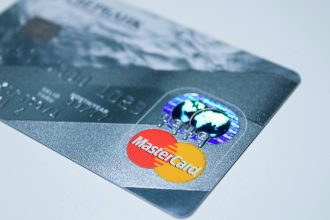Despite the widespread adoption of digital payment systems, some takeaway businesses still operate on a “cash only” basis due to several reasons. Primarily, cash transactions help these businesses avoid the fees associated with credit card processing. Merchant service fees can significantly impact the profit margins of small businesses, making cash payments more economically viable. Additionally, handling cash transactions can sometimes be faster and may not require the infrastructure and technical support associated with card payments.
Another consideration is the potential for easier tax management, as cash transactions are harder to track than digital ones. While this should always be done within legal boundaries, it’s a reality of why some businesses might prefer cash. Cash can also minimize chargebacks, which are more common with card payments and can be a costly issue for small businesses.
Furthermore, some takeaways may be operating in areas where local clientele are accustomed to cash dealings or where card usage is less prevalent. In certain communities, particularly where there’s a higher proportion of elderly or low-income residents, cash remains a preferred method for its simplicity and tangibility. Lastly, some businesses might prefer cash for reasons of tradition or simplicity, particularly if they have grown accustomed to cash-only operations over years or decades.
Ultimately, while “cash only” operation can limit customer choice and may potentially deter some business, for certain takeaways, the practical advantages currently outweigh the drawbacks.










2 Comments
This is a thought-provoking post that highlights the practical reasons behind the persistence of cash-only operations in the takeaway sector. It’s fascinating to see how these businesses balance the benefits of traditional cash transactions with the modern realities of digital payments.
One aspect worth considering is how the rise of mobile payment solutions could serve as a middle ground. Many of these platforms, such as Venmo, Cash App, or even QR code payments, allow for quick transactions without the high fees associated with credit card processing. This could offer a way for cash-only establishments to modernize while retaining the advantages of cash transactions.
Additionally, it’s important to consider the customer experience. As younger generations become a larger portion of the market, their comfort with digital payments could influence the sustainability of cash-only models. Takeaways that successfully blend traditional cash transactions with the option of digital payments might find a competitive edge in attracting a broader clientele.
Lastly, I wonder how the regulatory landscape will evolve in relation to cash transactions, especially in light of the increasing push towards cashless economies in many regions. It’s a complex issue that deserves ongoing discussion, and I appreciate the insights you’ve shared here!
This is a comprehensive overview of why some takeaway businesses continue to operate on a cash-only basis. It’s important to recognize that while digital payments offer convenience and security, the decision to remain cash-only often balances economic, social, and operational considerations. For small businesses, especially in communities where cash remains the dominant or preferred method of payment, maintaining cash transactions can foster trust and simplicity. However, it’s also crucial for these businesses to weigh the benefits of digital payments, such as safety, ease of record-keeping, and potential to attract a broader customer base, especially as consumer preferences evolve. Exploring hybrid systems—like cashless options alongside cash payments—might offer a strategic way to optimize operations, reduce risks, and cater to diverse customer needs while preserving operational efficiency.